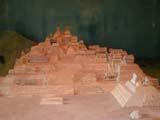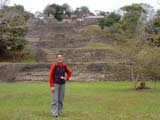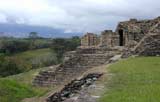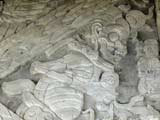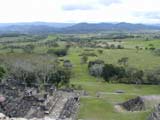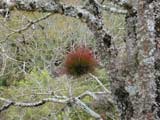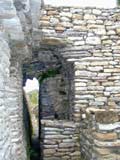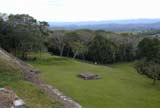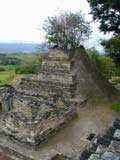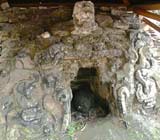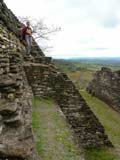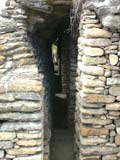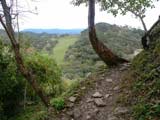| page 1 of 2 |
On Sunday, February 17, 2002 we visited Toniná, a Mayan ruin just outside of Ocosingo, a couple of hours' drive from San Cristóbal. As we drove over the mountains in our rented VW, we poked through heavy fog and frequent rain, sometimes heavier than we had yet seen in Chiapas. We were rewarded for not giving up when the sky cleared (leaving high clouds, but no rain or fog) just as we arrived at Toniná. We visited the excellent museum, and then climbed the pyramid.
Sign at site:
|
Named by indigenous people in Tzeltal, Toniná means the House of Stone. Metaphorically, the name refers to the home of celestial lights and deities of time: Toniná was a site of calendars and rituals. Iconography of this site is representative of two eras, which are clearly identified by references to particular deities: the first and oldest period, from 300 to 700 AD, was responsible for portrayals of birds belonging to the underworld and was governed by deceased and flayed suns. The second epoch, from 700 to 900 AD, is marked by celestial lights and felines, as well as the morning and evening stars. In the height of its glory, around 900 AD, Toniná's pyramidal structure was composed of seven platforms and was crowned by thirteen temples; a central stairway, leading to the Temple of Smoking Mirror, reaches a total of 260 steps. Palaces inhabited by Toniná's dynastic families (including military heads, architects, priests and astronomers) were constructed in the eastern portion of the acropolis. This area was lavishly decorated, in contrast with the acropolis' western section, where construction workers and warriors lived in austere dwellings. From the four temples of the seventh platform, priests and nobles managed the four regions of the sky, fought battles against darkness and maintained order regarding celestial phenomena. |
